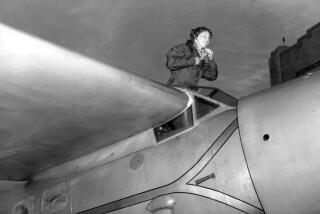Earnhardt Case Not by the Book
- Share via
The lead police investigator looking into stock car racer Dale Earnhardt’s death said officials from law enforcement and NASCAR hampered his efforts to examine evidence in the accident.
Daytona Beach, Fla., police detective Robert Walker told the Orlando Sentinel that he was ordered by a supervisor on the night Earnhardt died not to attend the driver’s autopsy or to inspect and photograph the racer’s wrecked car.
Walker also said NASCAR never told him about the broken seat belt it later blamed for Earnhardt’s fatal head injury. Since then, it has locked away the car in North Carolina and kept the findings of its own crash investigation secret from police.
Walker, who has investigated murders and accidental deaths in Daytona Beach since 1991, said he has no explanation for the orders he received.
“I do what they tell me to do,” he said. “I don’t know why, and I didn’t ask. If left to my own devices, I would have gone to the autopsy and photographed the inside of the vehicle.”
Police spokesman Sgt. Al Tolley insisted that no one has told police how to investigate Earnhardt’s death. He also said that because the death was accidental, it does not require as thorough a probe as a murder case.
When Walker arrived at Halifax Medical Center on Feb. 18, Earnhardt had just died. A nurse took Walker to the trauma room where the racer’s body already was covered with a sheet on a gurney. He noticed no marks on Earnhardt’s body.
By 5:45 p.m., according to a hospital property inventory sheet, Earnhardt’s racing helmet, racing suit, wedding band and other personal items were released to his widow, Teresa.
Experts say the helmet is a key piece of evidence to analyze in head injury cases such as Earnhardt’s.
Walker said he never saw or examined the helmet.
“It was gone before I got there,” Walker said. “I don’t know where it went.”
About 6:40 p.m., two hours after the crash, he found Earnhardt’s black No. 3 Chevrolet Monte Carlo atop a flatbed truck in the Daytona International Speedway infield. A tarp covered it. Walker said track officials worried about photographers or souvenir hunters getting near the car.
He spoke to a police superior, who told him, “There is no need for you to attend the autopsy tomorrow.”
“And I said OK,” recalled Walker, who would not identify the supervisor. “My superior said it was not necessary to look in the car or photograph it at this time. And I never saw the car again.”
Before leaving the track that night, Walker said he talked to a NASCAR official who was planning to ship Earnhardt’s car to North Carolina. Walker said he told racing officials the car needed to remain at the track until the autopsy was completed the next day.
*
A Florida bill that would limit public access to autopsy reports moved closer to passing Tuesday, the day after a medical expert reviewed photos of Earnhardt’s body.
Many racing fans are upset over the efforts by the Sentinel and other papers, including The Times, to see Earnhardt’s autopsy report despite his widow’s wishes. The photos are normally public record, but Teresa Earnhardt got a judge to seal them the day after the Daytona 500.
The measure before the Florida Senate would prevent members of the public and media from viewing anyone’s autopsy photos unless they can convince a judge there is good cause.
The bill was briefly discussed on its second reading in the state Senate on Tuesday and could be brought up for a floor vote as early as Thursday on its third and final reading. A similar measure overwhelmingly passed the House last week.
More to Read
Go beyond the scoreboard
Get the latest on L.A.'s teams in the daily Sports Report newsletter.
You may occasionally receive promotional content from the Los Angeles Times.










